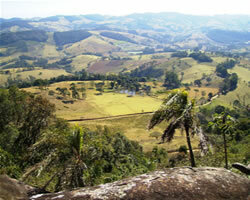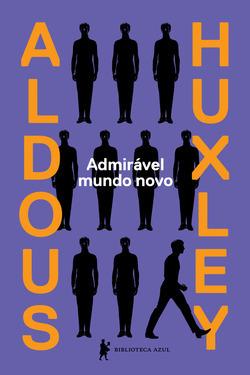Portuguese literature covers eight centuries of production. The first records date from the 12th century, when the Arabs were expelled from the Iberian Peninsula and with the formation of the Portuguese State.
First, the accounts were written in "Galician-Portuguese". This was due to the cultural and linguistic integration existing between Portugal and Galicia.
This region belonging to Spain and even today the ties with the Portuguese people, are linked through culture and economy.
Portuguese literature follows the great historical transformations. These are the influences that dictate the divisions and subdivisions of literary production into: Medieval Era, Classical Era, Romantic or Modern Era.
Ages are subdivided into literary schools or period styles.
the medieval era
The Medieval Era of Portuguese literature is divided between First Epoch (troubadour) and Second Epoch (humanism).
It begins at the beginning of the 12th century with the publication of a text by riverside song, also known as
song of Guarvaia, by Paio Soares de Taiverós. This work is considered the oldest in Portuguese literature.Troubadourism - First Epoch
O Troubadourism occurs between 1189, date of publication of the riverside song, until 1434, when Fernão Lopes was appointed chief chronicler of Torre do Tombo. During Troubadourism, there are manifestations in poetry, prose and theater.
Troubadour poetry is subdivided into:
- Lyric Poetry: Cantigas de Amor and Cantigas de Amigo;
- satirical poetry: Songs of Scorn and Songs of Cursing.
Inside the medieval prose the literary manifestations are subdivided into Cavalry Novels, Hagiographies, Chronicles and Nobiliary. In theater, the subdivision is called Mysteries, Miracles and Moralities.
Learn more about Troubadour Songs.
Humanism - Second Epoch
O Humanism it extends from 1434 to 1527, and is considered a transition period from medieval to classical culture. It starts with naming Fernão Lopes for the main chronicler of Torre do Tombo, in 1418.
During this period, poetry is classified as Palace Poetry. The author Fernão Lopes is the main representative of humanist prose and, in theater, Gil Vicente.
Learn more about Medieval Literature.
was classic
The classic era of Portuguese literature took place between the 16th, 17th and 18th centuries. As in the Medieval Era, it featured demonstrations in poetry, prose and theater. This phase is divided into three periods:
Classicism (1527-1580)
O Classicism its initial milestone is the arrival of Sá de Miranda from Italy. Cradle of the Renaissance, the Portuguese poet brought a new style known as “sweet stil nuevo” (Sweet new style).
No doubt, Luís de Camões, was the main representative of the moment with his epic poetry The Lusiads.
16th century or Baroque (1580-1756)
The starting point of the Baroque in Portugal it is the death of the writer Luís de Camões in 1580. This period lasted until 1756 with the arrival of a new style: Arcadism.
Without a doubt, Father Antônio Vieira was the greatest representative of the period from which his Sermons. These works were written in a conceptist style, where working with concepts was the most important.
18th century or Arcadianism (1756-1825)
Also called Neoclassicism, the Arcadianism in Portugal its initial milestone was the foundation of Arcadia Lusitana in 1756 in the capital, Lisbon.
These places served to bring together several artists committed to presenting a new aesthetic and moving away from the previous one.
Bocage was considered the greatest writer of the period and his works that deserve mention are: Death of D. Ignez de Castro, Elegy, Maritime Idylls.
modern era
The Modern Era of Portuguese literature begins in 1825 and goes on to the present period. It is divided into Romanticism (1825-1865), Realism, Naturalism and Parnassianism (1865-1890), Symbolism (1890-1915) and Modernism (1915 to the present day).
Romanticism (1825-1865)
O romanticism in Portugal begin with the publication of the work Camões of Almeida Garret in 1825. For some scholars, this literary school begins in 1836 with the publication of the voice of the prophet, by Alexandre Herculano.
At that time, the country was going through many transformations resulting from the French Revolution and the Napoleonic Wars. This feeling of uncertainty and dissatisfaction is evident in the literary works that were produced in the period.
The main characteristics of Portuguese romanticism were: idealization, suffering, nostalgia, nationalism, subjectivism and medievalism. The writers stand out: Almeida Garret, Alexandre Herculano, Antônio Feliciano de Castilho, Camilo Castelo Branco and Júlio Dinis.
Realism (1865-1890)
O realism in Portugal presents as a starting point the "Questão Coimbra". It represented a dispute between some young scholars and students from Coimbra (Antero de Quental, Teófilo Braga and Vieira de Castro) and the romantic writer Antônio Feliciano de Castilho.
Averse to romantic ideals, realism had as its main characteristic the denial of feelings, which were exalted by romantic writers. For this, the works written in this period were supported by scientism, objectivism and materialism.
Writers stand out: Antero de Quental and Eça de Queirós. The first had his work the Sonnets, as the main one of the period. Eça de Queirós, on the other hand, revealed his mastery of the novel the cousin basil.
Naturalism (1875-1890)
O naturalism in Portugal began with the publication of the work The Crime of Father Amaro (1875) by Eça de Queirós. Although Eça has had great prominence in the realism movement, some of his works bear remarkably naturalistic characteristics.
Parallel to the realist movement, naturalism has some characteristics that resemble the negation of the romantic, scientism, objectivity and materialism.
On the other hand, its characters are marginalized and do not have a great focus on the bourgeoisie as is the case with realism. At that moment, human characteristics and instincts are highlighted.
In addition to Eça de Queirós, the writers who stood out the most during the period were Abel Botelho, Francisco Teixeira de Queirós and Júlio Lourenço Pinto.
Parnassianism (1870-1890)
O Parnassianism in Portugal it also happened parallel to the realist and naturalist movements. His forerunner was the poet João Penha. Based on the motto "art for art's sake", writers at that time were more concerned with formal perfection than the content itself.
Thus, the concern with aesthetics was the main characteristic of these works, the sonnet being a type of poem with a fixed form that prevailed. We have as themes the everyday reality and also the classics. The main writers were: João Penha, Cesário Verde, António Feijó and Gonçalves Crespo.
Symbolism (1890-1915)
O symbolism in Portugal had as its starting point the publication of the work oarists (1890) by Eugenio de Castro. Opposed to previous movements, he rejects scientism, materialism and rationalism. Thus, its main characteristics are musicality, transcendence and subjectivism.
The writers of that time rely on metaphysical and spiritual manifestations to write their works. In addition to Eugênio de Castro, the poetic production of António Nobre and Camilo Pessanha stands out. This movement ends in 1915 with the advent of the modernist movement.
Modernism (1915 to the present day)
O modernism in Portugal begins in 1915 with the publication of the magazine orpheus. This period was divided into three phases:
- Generation of Orpheu (1915-1927) which begins with the publication of the magazine orpheus. Its main representatives were: Mário de Sá-Carneiro, Almada Negreiros, Luís de Montalvor and the Brazilian Ronald de Carvalho.
- Presence Generation (1927-1940) which begins with the publication of the magazine Presence. Its main representatives were: Branquinho da Fonseca, João Gaspar Simões and José Régio.
- neorealism (1940) which begins with the publication of Gaibés, by Alves Redol. Besides him, other writers who stood out were: Ferreira de Castro and Soeiro Pereira Gomes.
Origins of Brazilian Literature
At origins of Brazilian literature they are closely related to Portuguese literary aesthetics. The first manifestations of Brazilian literature took place during the Colonial Period, in the 16th century. Unlike Portuguese literature, it is divided into two eras: it was colonial and it was national.
Learn more about Literary Movements.



